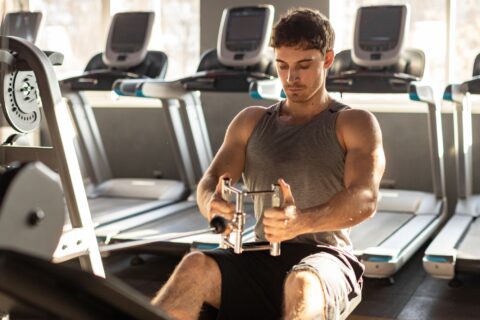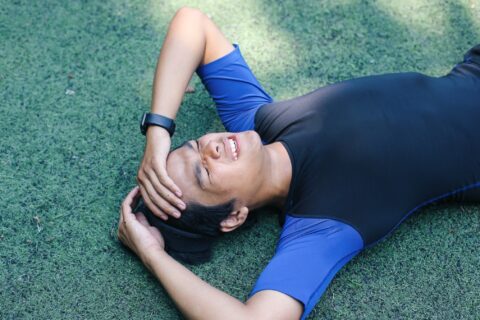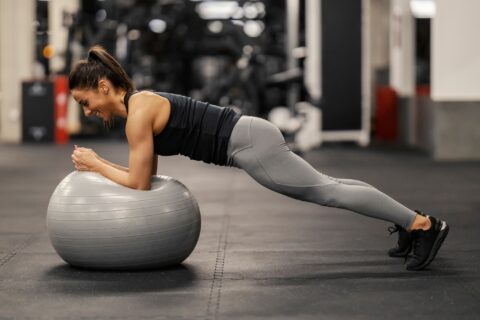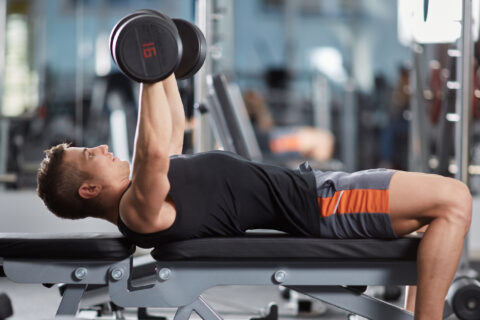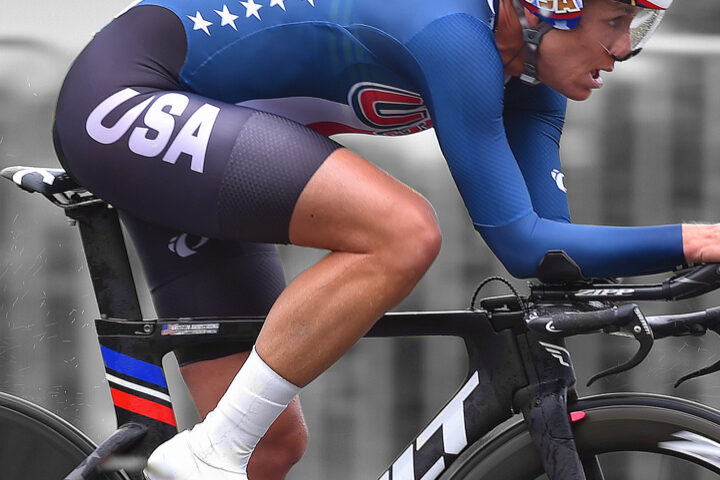Every winter I run a conditioning program for cyclists, and without fail—usually in the middle of a grueling core routine—I’m begrudgingly asked, “Why are we doing this?”
I love that question. With pride I explain the benefits: “I’m 40 and I’ve never had an overuse injury.” Last year however, as work got busy, I did what most cyclists do. I prioritized riding at the expense of strength work.
And in mid-April I found myself pulling out of a time trial with stabbing pain in my knees. The next day, after feeling my rock-hard IT bands, my massage therapist told me with an appropriate lack of sympathy that I should know better. And I do.
As soon as the snow begins to melt, many of us find ourselves increasing both our intensity and volume on the bike. Knee injuries are so common in the spring that one type of patellar tendinitis has even been nicknamed “spring knee.” Yet, unlike running, cycling is very low impact. Why, then, do we still get knee injuries? The answer lies in the remarkably adaptable nature of the human musculature.
Doing bicep curls would lead you to believe that a single muscle bends each joint, but that’s not the case. In your leg, a surprisingly large number of muscles are involved in the ability to extend your knee. Having multiple muscles allows some to do the strength work, such as the rectus femoris, while others provide stability, such as the vastus medialis. If one muscle becomes weak, tight, or neurologically inhibited, the others can take over its job.
This versatility allows us to keep functioning despite any issues that arise. That fact, however, means that any new recruitment pattern that develops may be less than optimal. If you’re cranking away at 5,400 revolutions per hour (90 RPM), it adds up, leading to neurological reprogramming, learned muscle imbalance, and, ultimately, injury.
For example, a weak gluteus medius—a muscle that provides stability in single legged exercises—causes the iliotibial (IT) band to take up more stability work. Over time the IT band gets tight and forces the patella to track incorrectly, causing tendinitis. Likewise, if your quads become tight from riding, this can lead to patellar femoral syndrome in which the patella grinds into your femur.
Muscle imbalance caused by poor recruitment patterns is at the heart of most cycling knee injuries. It is caused by three things: muscle weakness, tightness, or bad position. Surprisingly, any of these three issues often starts with unstable hips.
The vastus medialis (in your quads) and gluteus medius (in your butt) are the biggest culprits in knee pain. To keep your knees happy and healthy, here are a few things you can do:
Get a good bike fit
A bad position on the bike ensures poor muscle firing patterns and increased strain on joints. The first thing you should do to increase the longevity of your knees is to find a certified fitter. The goal is a neutral knee position, according to biomechanist Charles Van Atta. He finds that improperly tracking knees are often due to poor foot support and a weak gluteus medius.
Stretching and functional work
Heading straight into the weight room and lifting heavy weights likely won’t improve knee strength or correct imbalances. In some cases all it does is strengthen muscles that are already being recruited inappropriately. Functional training that focuses on keeping muscles activated, stable, and loose can be more important for injury-free cycling. Spend 10 to 20 percent of your training time doing stretching, activation, and stability work. (See below for specific exercises.)
Foam rolling and massage
Foam rolling is one of the best things to do for knee health, according to many physical therapists who work with cyclists. They’ll often recommend rolling several areas: gluteals, hamstrings, quadriceps, and calves. The objective is to take tension off the knee and all the muscle insertions that cross the knee.
Wear leg warmers
One of my golden rules: Keep your ligaments warm. If the temperature is below 60 degrees, wear leg warmers. If it’s 60 to 65 degrees, go with knee warmers.
Ease in and spin
Slowly increase your volume during base season training, and spin at a higher cadence. Big gear riding can put a large strain on the patella, so save that for later in the season. And remember, climbing is essentially big gear work.
Treatment strategies
A full description of cycling knee injuries is beyond the scope of this article. For a thorough guide, see Andy Pruitt’s Complete Medical Guide for Cyclists. Until you can read the book or see a physical therapist, here are a few things to try:
For All Injuries
- Ice two to three times per day
- Take NSAIDs to reduce inflammation
- Stay off the bike if the pain is sharp or progressive
- Have your fit checked, especially if the pain is in both knees
Pain around the patella (chondromalacia and patellar tendinitis)
Injuries to the tendons around the patella are often caused by doing too much too quickly, low-cadence riding, hard climbing, and weights. A few things to try:
- Pedal at a higher cadence
- Increase mileage slowly
- Raise your saddle 3 millimeters
IT band friction
Characterized by a sharp pain on the outside middle of the knee, this injury is frequently caused by poor position. Try the following:
- Get repositioned on your bike
- Move your cleats to widen your stance
- Lower your saddle up to 6 millimeters
Hamstring-related injury (pes anserine bursitis and biceps femoris tendinitis)
In these conditions, the pain usually emanates from behind or to the side of the knee about an inch below the joint. The most frequent causes are riding a fixed-gear bike and a saddle that’s too high. Consider:
- Lowering your saddle a few millimeters
- Reducing the float on your pedals
The “My Knees Will Love Me” Routine
Here are six exercises that will help loosen and build strength and stability in your glutes and quads. It’s just 10 minutes a few times per week. Your knees will thank you!
Side-lying clam
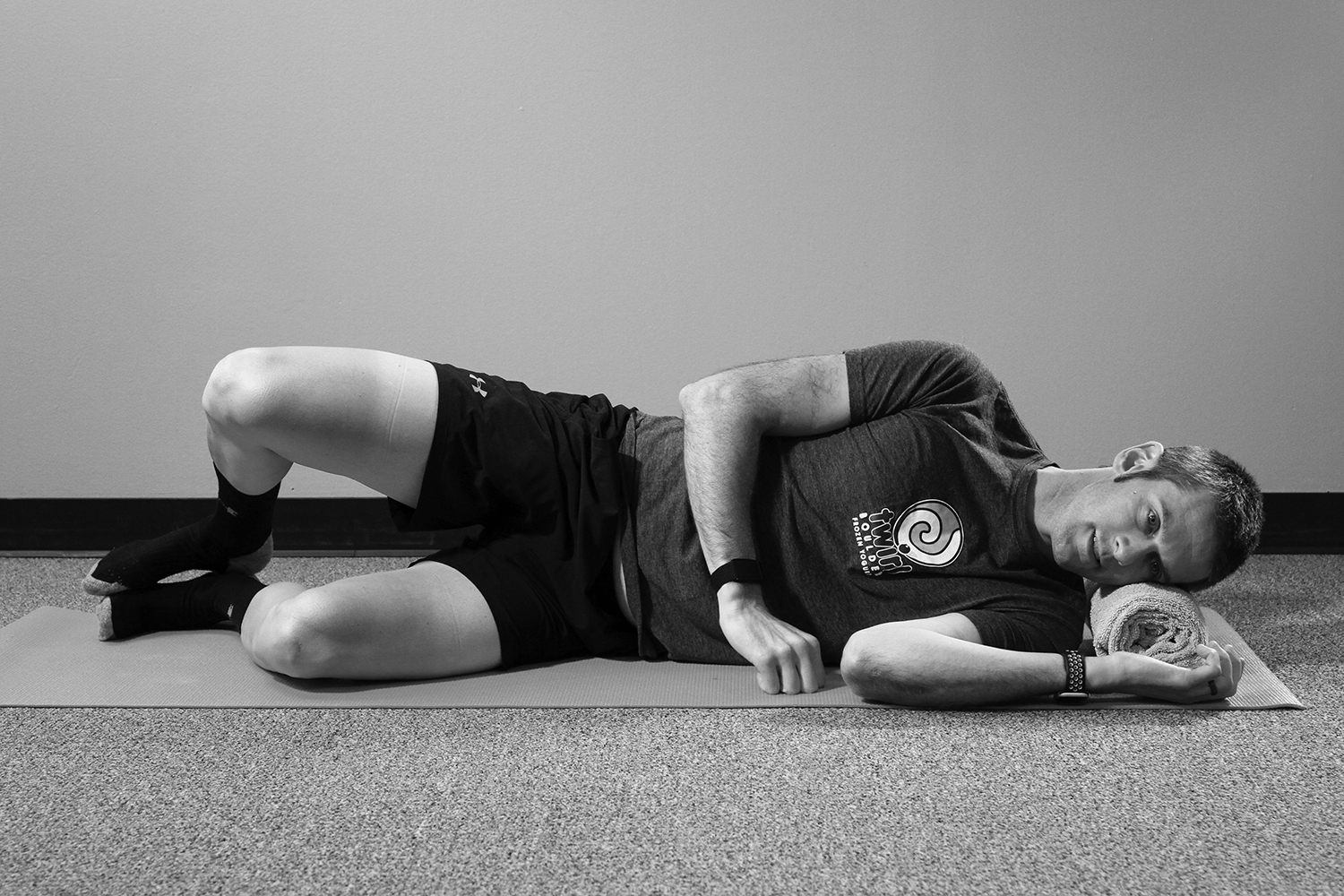
This is a great exercise for strengthening your gluteus medius.
- Lie on your side with your knees bent.
- Keep your lower knee on the floor and your ankles together.
- Raise your upper leg, and then lower it.
- Tie a Thera-Band around your knees for added resistance.
- Start with 1 minute on each side.
Standing quad strengthener
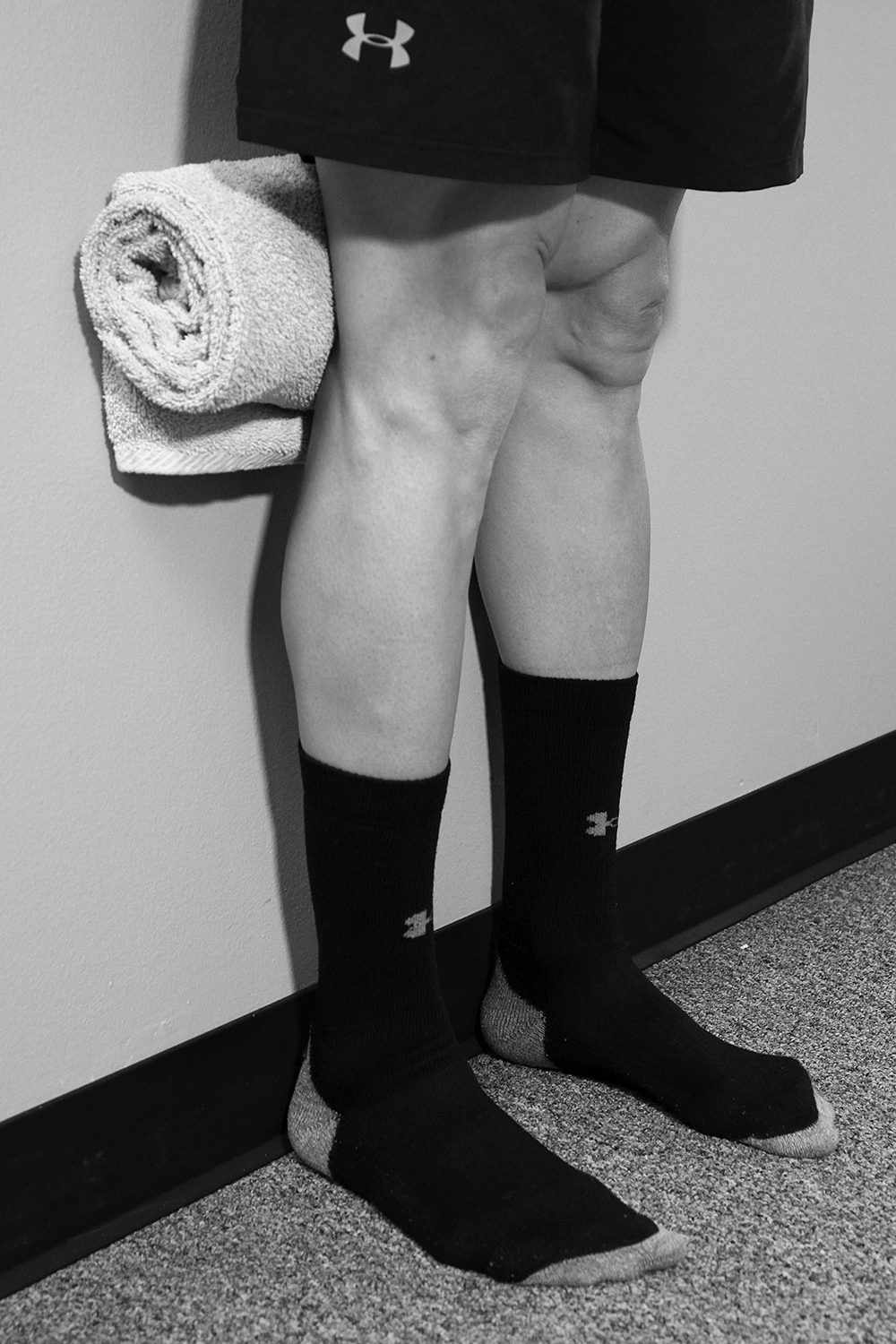
This exercise will help balance and stabilize your quads
- Stand with your back to the wall and a towel behind your involved knee.
- Push your knee against the towel and hold for 10 seconds.
- Start with 10 repetitions on each leg. Build to 20 repetitions.
Piriformis foam roll
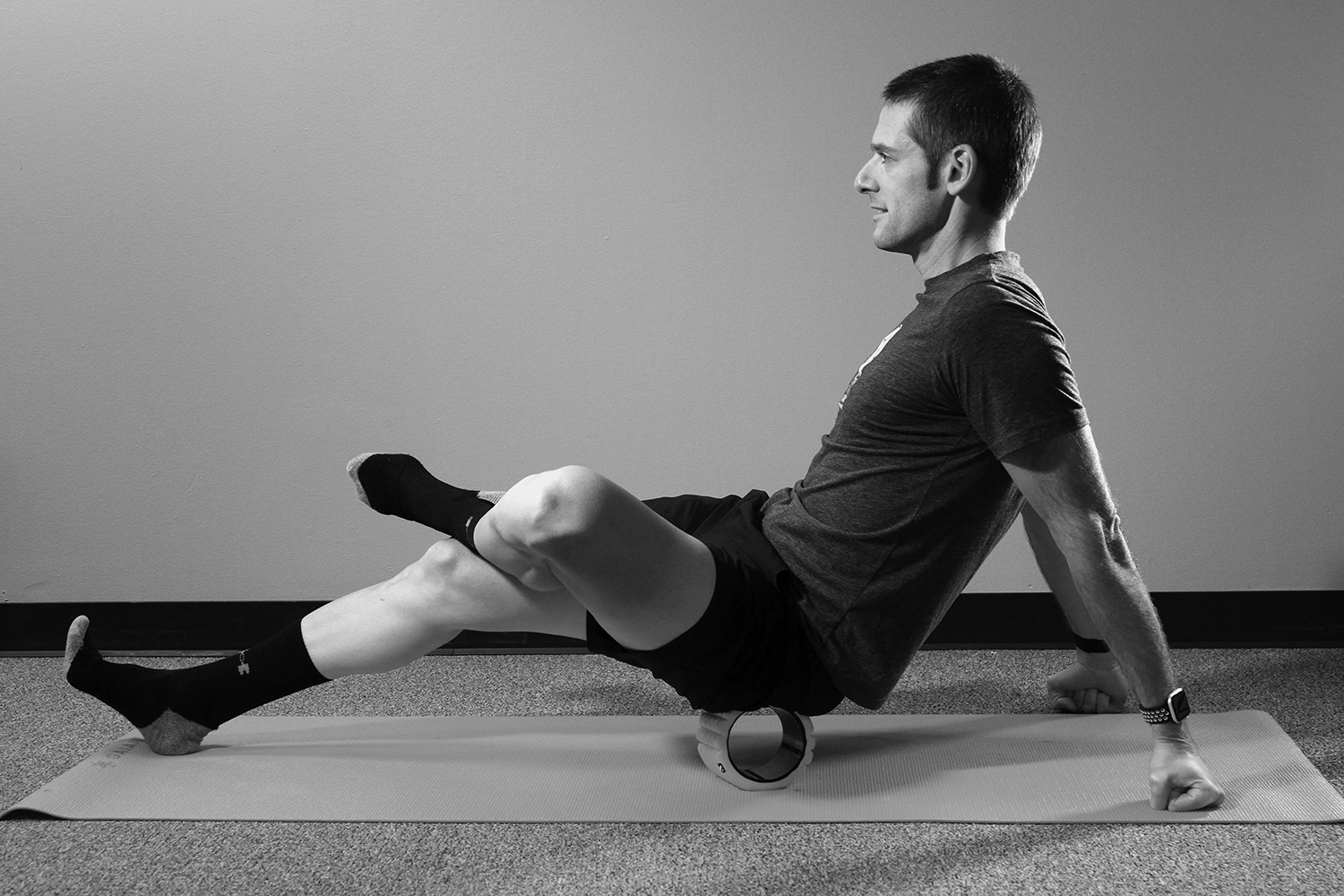
- Rest your right glutes on the foam roller.
- Bend your right knee and place your ankle on your left leg below the knee.
- Roll back and forth on the roller.
- Start with 1 minute on each side.
IT band foam roll
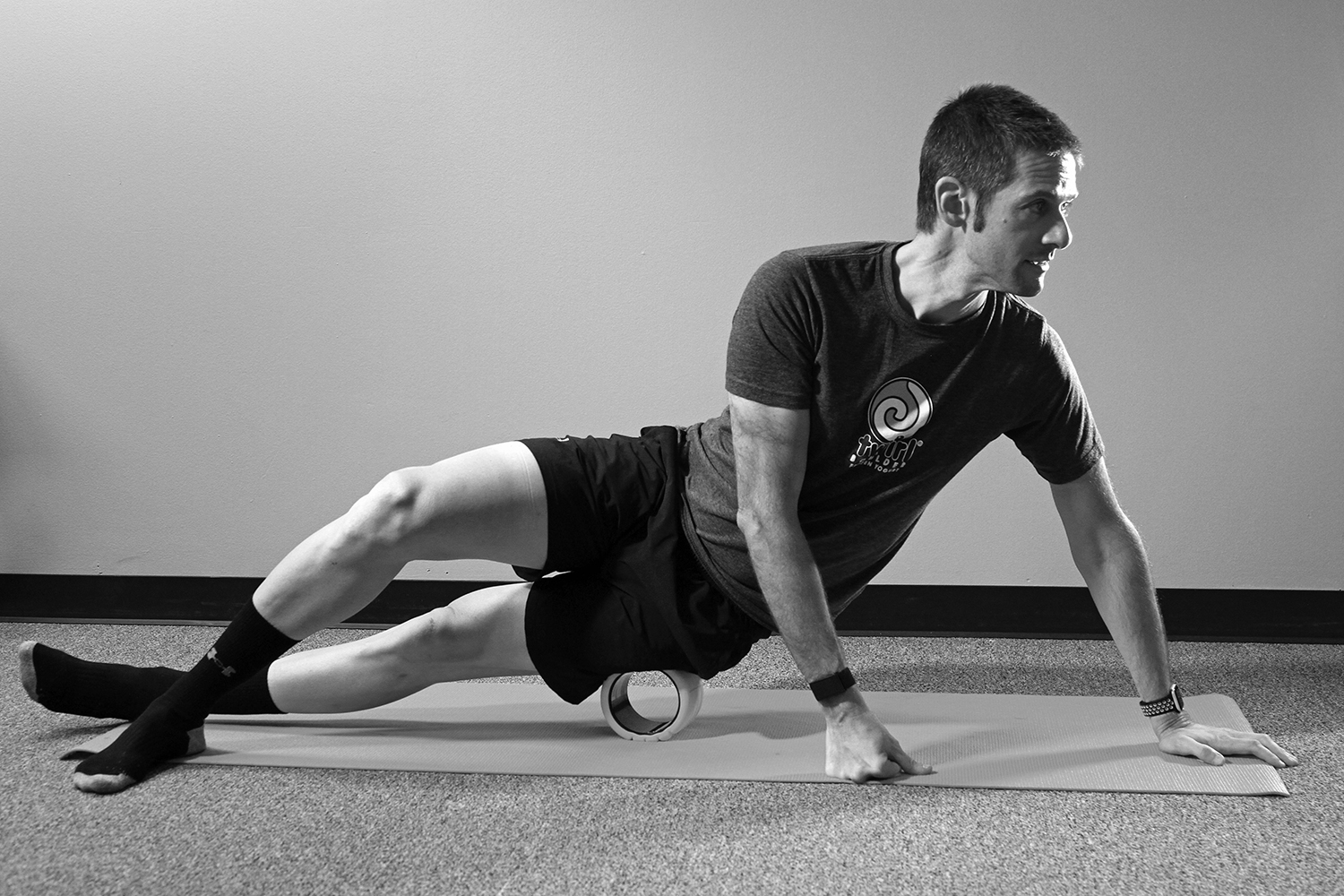
Keeping the IT band loose is critical to ensure your patella tracks correctly. Try these exercises:
- Lie on your side with the IT band (thigh) lying on the foam roller.
- Roll down the foam roller the length of your thigh.
- Remember to only use pressure when rolling towards your heart.
- Start with 1 minute on each side.
Pigeon stretch
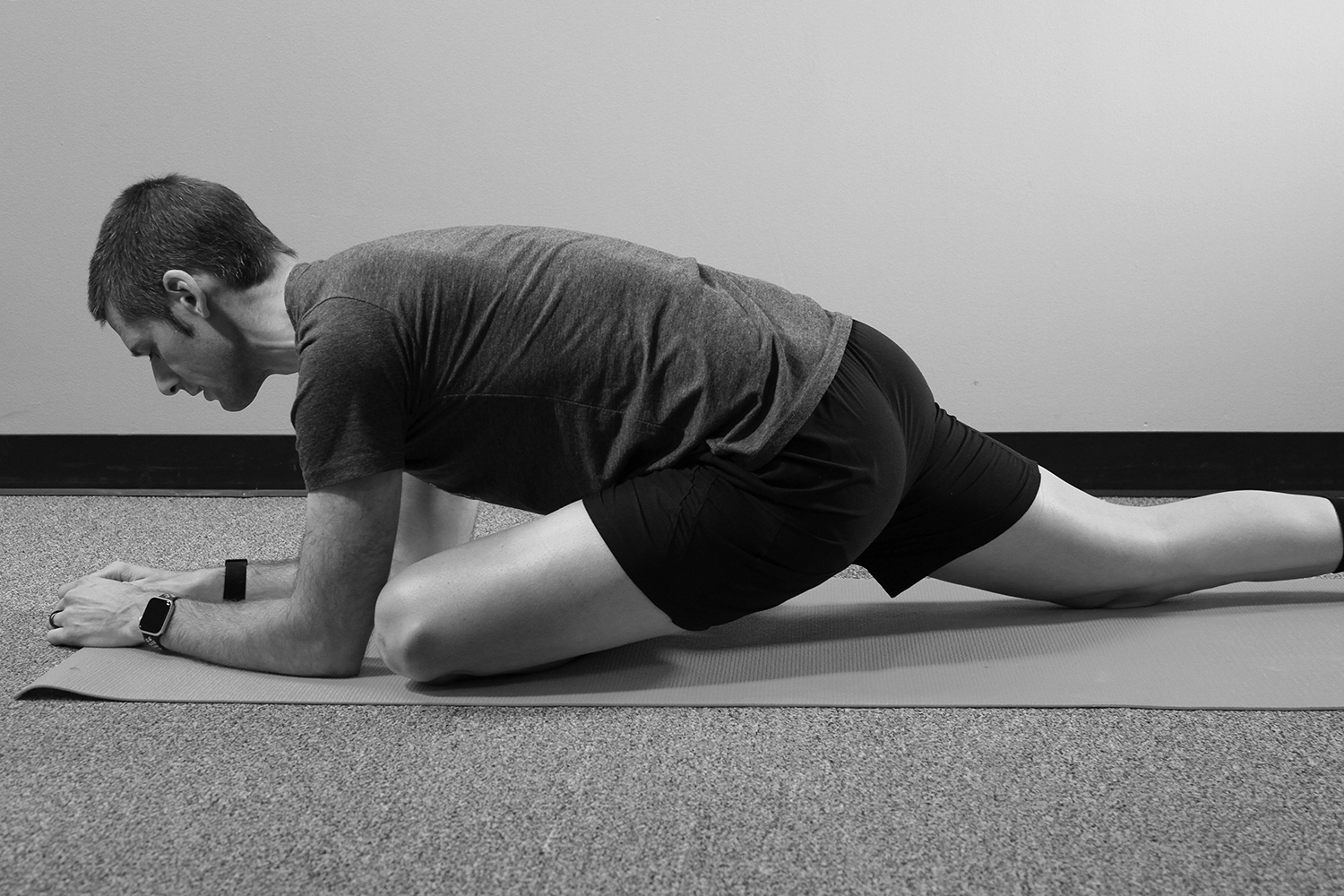
This is a great stretch for releasing your glutes:
- Use a flat surface that’s just below hip height.
- Cross your leg and place it on the surface in front of you.
- Lean forward, keeping your back neutral, until you feel a stretch.
- Hold for 30 to 45 seconds. Perform 2 to 3 stretches on each side.
Hip flexor stretch
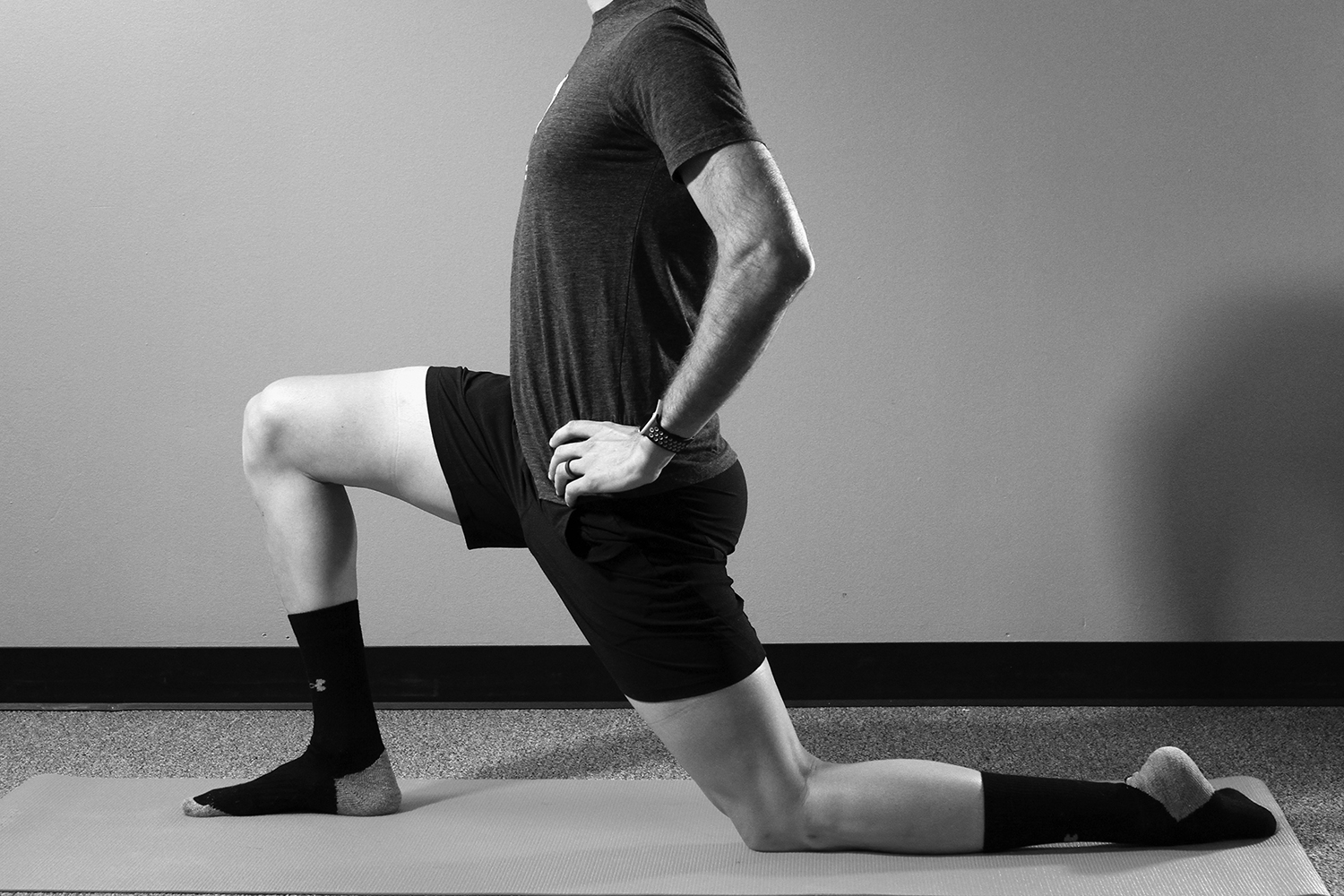
- Rest one knee on a towel or pillow and bend your other knee in front of you.
- Point your forward toes inward.
- Lean into your hip keeping your back straight.
- Hold for 30 to 45 seconds. Do 2 to 3 stretches on each side.
- Note: The forward hip position in the photo above is an advanced pose. If you are new to this exercise, you should not rock that far forward because it makes it hard to use the pelvis correctly and get an adequate stretch of the psoas.
IT band stretch
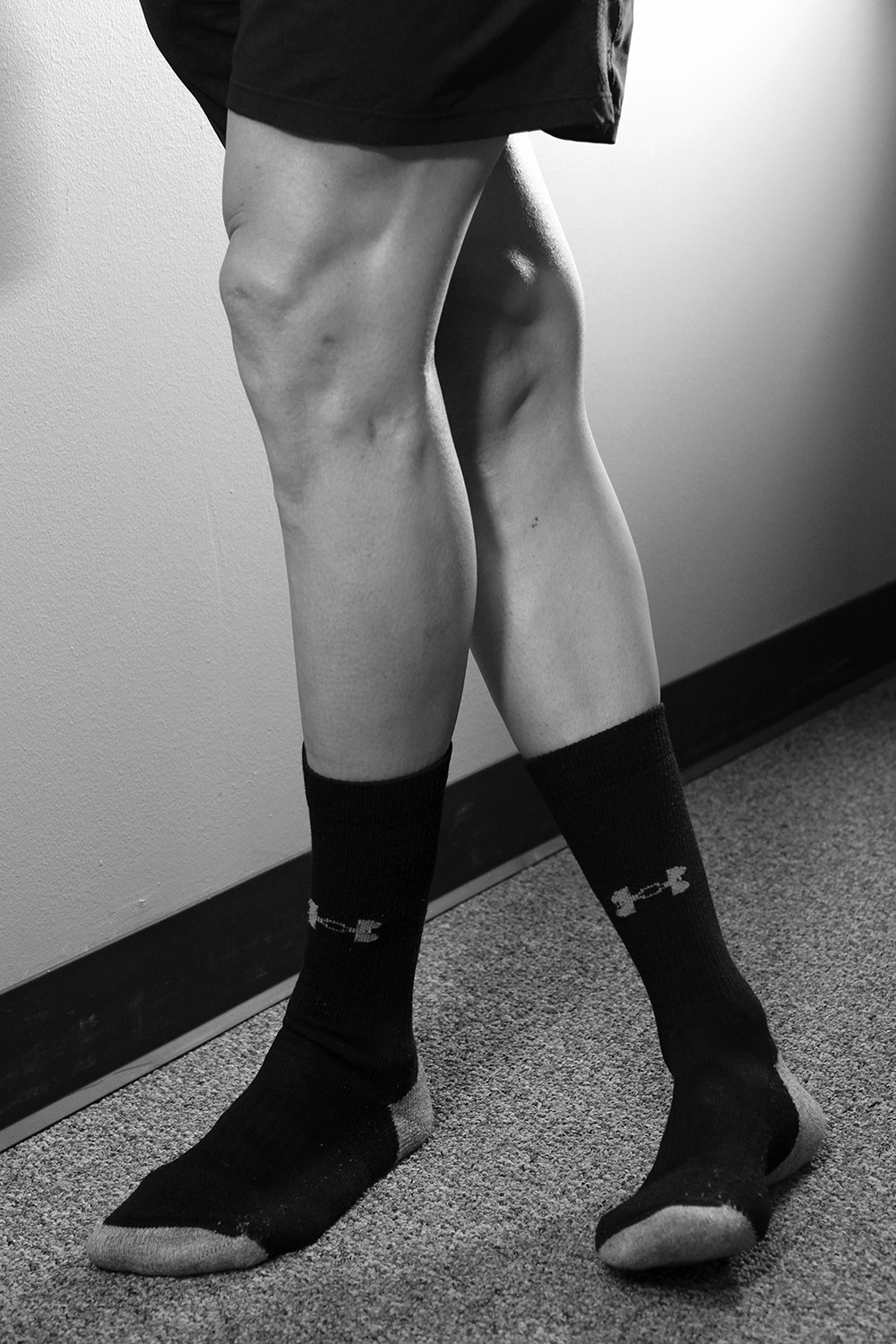
- Stand close to a wall with your involved leg towards the wall.
- Cross the uninvolved leg in front of you with your feet about six inches apart.
- Lean your involved hip into the wall.
- Hold for 30 to 45 seconds. Do 2 to 3 stretches on each side.

